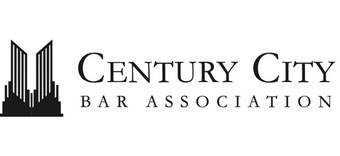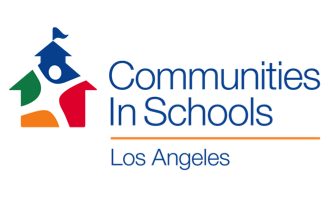By Kevin Klowden (Milken Institute) and Elisabeth Browne (Cornerstone Research)
The damage to the economy of Los Angeles from a potential strike by the Screen Actors Guild is undeniable, yet extremely difficult to estimate. The range of estimates of the impact of the Writer’s Guild strike that ended a year ago varied from $380 million to $2.5 billion. Kevin Klowden of the Milken Institute wrote a seminal study of the impact of that strike: “The Writers’ Strike of 2007-2008: The Economic Impact of Digital Distribution.” Here Mr. Klowden discusses how a SAG strike might affect our already battered entertainment economy.
The Current SAG Stalemate
On June 30, 2008, the contract established between the Screen Actors Guild (SAG) and the Association of Motion Picture and Television Producers (AMPTP) expired. Although there was plenty of coverage in the news media concerning another major Hollywood strike so soon after the completion of the October 2007 to February 2008 Writer’s Guild strike, no actual strike occurred. Because the SAG leadership could not reach a consensus on the actual need for a strike, none took place. However, instead of being eliminated, the uncertainty over a possible strike has instead been extended all the way into 2009, with only ongoing negotiations and the continued lack of a SAG consensus preventing the occurrence of another strike.
Estimating the Harm from a SAG Strike – the Damage has Already Begun
In examining the economic impact of an actors’ strike, there are many factors to consider. First and foremost, the strike’s impact on the economy cannot simply be measured by a short-term loss of television advertising revenue. Losses from the writers’ strike affected television revenues long after the strike itself was resolved, including cancelled shows, shortened seasons, a lack of new pilots being filmed or picked up, and consistently reduced ratings for all networks, even once the new season resumed. In addition, key economic multipliers should be considered. Not only did people at the studios and production companies lose earnings, but so too did the numerous independent contractors, artists, construction workers, clothing manufacturers, caterers, drivers, cleaning crews and others who directly or indirectly earn revenue from film and television production. The hospitality industry, financing and bonding firms, local restaurants, and other professionals also felt the impact. And though many workers were able to find other jobs, they displaced other people who also could have done the same jobs. The Milken Institute estimated the impact on California alone to be worth $2.1 billion in lost economic growth as measured in terms of Gross State Product.
In addition, the overall economic condition of both the state and the country must be addressed. The Milken Institute report suggested that the writers’ strike actually helped to push California into recession in early 2008, ahead of the rest of the country. Currently, the United States is in the deepest recession in decades. This creates possible differences in consequences for a strike in 2009. Overall economic losses are actually likely to be lower in the short term because advertising revenues are already down and the major studios and networks have already engaged in non-strike related layoffs. However, the lingering consequences of any strike will be longer, as it is much less likely that workers who lose their jobs because of a strike will regain them when the strike ends. Finally, in examining the length and scope of the strike’s impact, we need to understand that both the long period from the end of the actors’ contract on June 30, 2008 to today and the fractured negotiations have created a very different circumstance than that with the writers. The very threat of a strike has already led to economic losses that continue as producers, firms, and studios act cautiously to mitigate the effect of any potential strike. Last Spring and Summer, many productions were either rushed or delayed in anticipation of a possible strike. As no settlement with SAG has yet occurred, many network and studio executives remain more cautious when committing to major projects. Costs from these delayed, postponed, and diverted projects have likely already run into the tens of millions of dollars.
The Strike Dynamics of SAG Differ from the Writers Guild
The most difficult element in estimating the potential economic effects of a strike is the breadth of participation by actors and the subsequent impact on not only the entertainment industry, but all of the other local industries tied into it. In order to understand how the mechanics of a SAG strike would be different than the one by the writers, it is worth examining how the Screen Actors Guild functions.
In theory, the Screen Actors Guild has a wider overall reach than the Writers Guild. Since the 1988 strike, it has expanded to include the Screen Extras Guild in addition to entering into an alliance with the American Federation of Television and Radio Artists (AFTRA). These two changes have resulted in a very different dynamic as to how the guild operates. While many writers are not active at any given time, most members of the Writers Guild earn a living from their writing, either through active projects or through residuals from past work. Because of the presence of so many part-time actors in the current SAG ranks, the vast majority of the guild’s members do not actually make a living from acting. This makes it far harder to unify the interests of the guild, and raises the concern that many more actors would be willing to strike (compared with writers), as their short term losses would be minimal when compared to any potential gains they might make if the strike gained them better terms and they then “made it big” by landing a major role.
On the other hand, AFTRA already has a working contract with the producers that it ratified separate from SAG, which calls into question how widespread an actors’ strike truly would be. In addition, the extended length of negotiations has resulted in a number of smaller side deals that have been reached to act as buffers to any potential strike. These “in-kind” deals generally state that producers will retroactively honor any final SAG-AMPTP deal when it is reached, thus exempting them from any direct strike action. Also, because SAG is the only major union not to reach an agreement, chances of solidarity from other unions, such as in 1988, is less likely.
Given the actions already taken by so many players to minimize the consequences of a strike, and the question of breadth of participation, unless the actors’ strike is significantly longer than the writers’ strike, the economic consequences are likely to be smaller. It is very difficult to estimate exact numbers until it is clear who is participating, but a strike of equal length might only have half the impact of the writers’ strike. Still, based on prior estimates of the damage caused by the writer’s strike, the impact of a prolonged strike could still be easily over $1 billion in an already battered Southern California economy.
Note: Assistance with this article was also provided by Elisabeth Browne and Sean Twersky of Cornerstone Research, a firm specializing in economic damages analysis and support of experts in complex business litigation. Opinions expressed in this article are those of Mr. Klowden and do not represent positions taken by Cornerstone Research or the Milken Institute.






